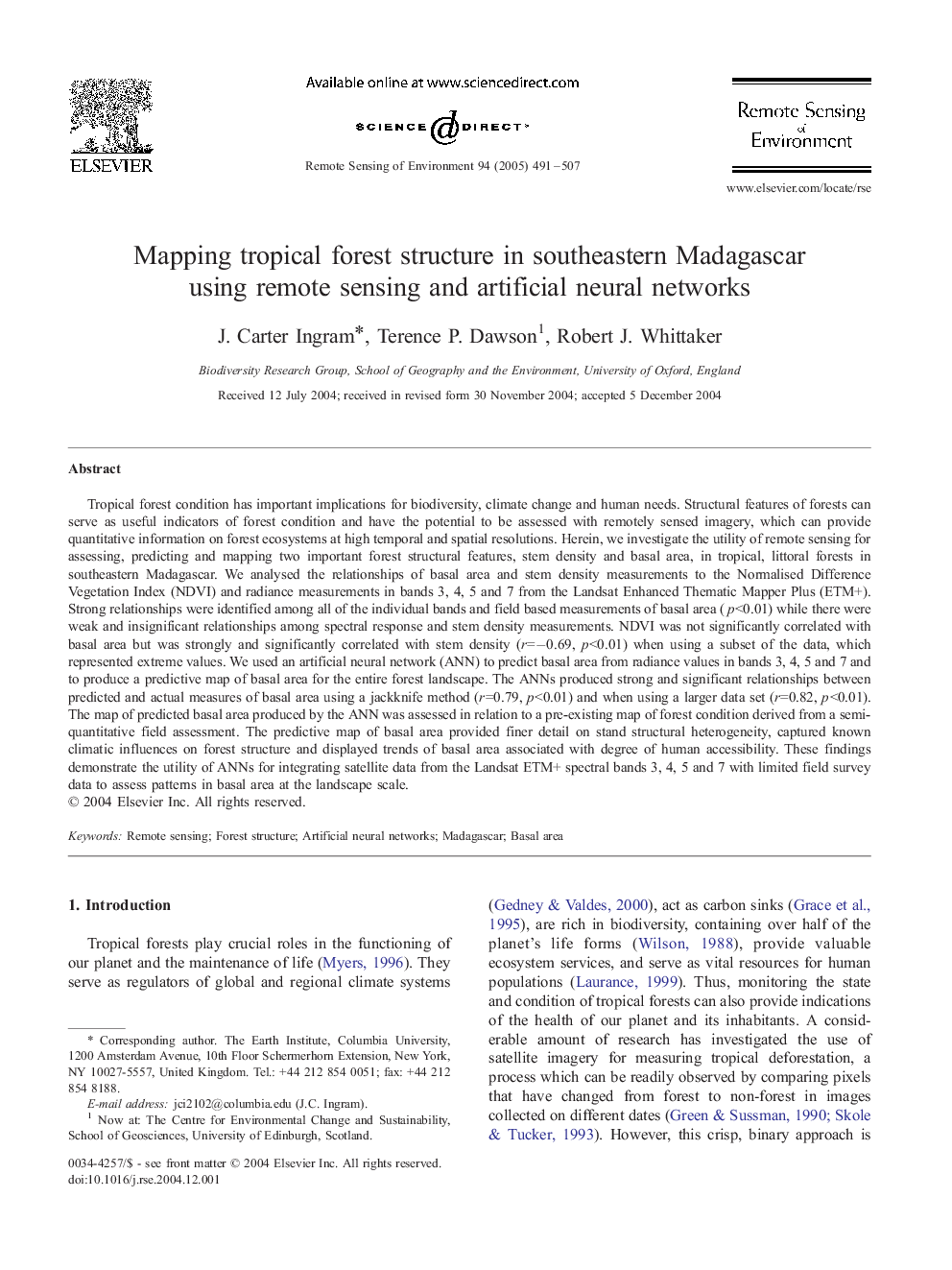| Article ID | Journal | Published Year | Pages | File Type |
|---|---|---|---|---|
| 10114314 | Remote Sensing of Environment | 2005 | 17 Pages |
Abstract
Tropical forest condition has important implications for biodiversity, climate change and human needs. Structural features of forests can serve as useful indicators of forest condition and have the potential to be assessed with remotely sensed imagery, which can provide quantitative information on forest ecosystems at high temporal and spatial resolutions. Herein, we investigate the utility of remote sensing for assessing, predicting and mapping two important forest structural features, stem density and basal area, in tropical, littoral forests in southeastern Madagascar. We analysed the relationships of basal area and stem density measurements to the Normalised Difference Vegetation Index (NDVI) and radiance measurements in bands 3, 4, 5 and 7 from the Landsat Enhanced Thematic Mapper Plus (ETM+). Strong relationships were identified among all of the individual bands and field based measurements of basal area (p<0.01) while there were weak and insignificant relationships among spectral response and stem density measurements. NDVI was not significantly correlated with basal area but was strongly and significantly correlated with stem density (r=â0.69, p<0.01) when using a subset of the data, which represented extreme values. We used an artificial neural network (ANN) to predict basal area from radiance values in bands 3, 4, 5 and 7 and to produce a predictive map of basal area for the entire forest landscape. The ANNs produced strong and significant relationships between predicted and actual measures of basal area using a jackknife method (r=0.79, p<0.01) and when using a larger data set (r=0.82, p<0.01). The map of predicted basal area produced by the ANN was assessed in relation to a pre-existing map of forest condition derived from a semi-quantitative field assessment. The predictive map of basal area provided finer detail on stand structural heterogeneity, captured known climatic influences on forest structure and displayed trends of basal area associated with degree of human accessibility. These findings demonstrate the utility of ANNs for integrating satellite data from the Landsat ETM+ spectral bands 3, 4, 5 and 7 with limited field survey data to assess patterns in basal area at the landscape scale.
Related Topics
Physical Sciences and Engineering
Earth and Planetary Sciences
Computers in Earth Sciences
Authors
J. Carter Ingram, Terence P. Dawson, Robert J. Whittaker,
